uncover
Humans & the longleaf

"Wow, it's amazing to see how the population has grown in the US over the last 200 years. I wonder who lived in the longleaf range?"
It's important to remember that there have been lots of different groups of people that have lived on this land over time, who have had different relationships with the land, and who have had different impacts on its health.
Indigenous People
Human artifacts that date as far back as 18,000 BCE have been found in the Southeastern US. Some of these early people built giant flat topped mounds of earth that were used in many ways. These earthen constructions show us that the people who lived in the longleaf pine region had a rich culture and civilization for many thousands of years.

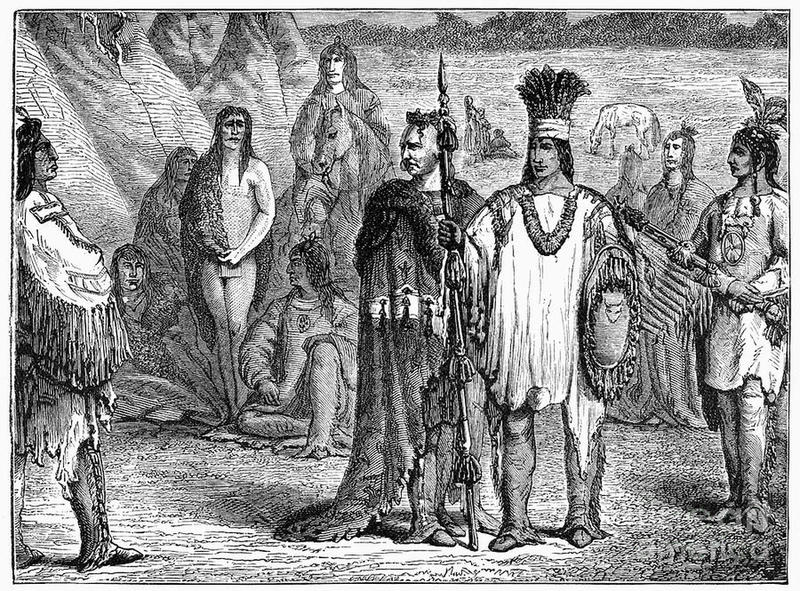
Native American People
Indigenous people of North America have continuously lived in the longleaf pine region. More than 24 different groups of people lived in the Southeast US, some directly descended from the Mississippian people (mound builders). Some of these are the Cherokee, Chickasaw, Choctaw, Muskogee/Creek, and Seminole people. These people historically lived in the longleaf pine forests in small communities that were part of larger nations or confederacies. These people were forcibly removed from this region by the US government in the mid 1800s. While many descendants of these people now live on the lands where they were removed to in Oklahoma primarily, there are also people of these tribes who still live in the Southeast.
European Explorers
Starting in the 15th century, Spanish, French, and English explorers came to North America and set up colonies along the Atlantic Coast. They were sent by their nations to find new resources to use in their own countries. As they attempted to find new resources to exploit they set up settlements, usually along the coasts and they introduced animals and plants from their home countries to the ecosystems where they explored. They also traded with, intermarried, and enslaved some of the Native people who already occupied this land.
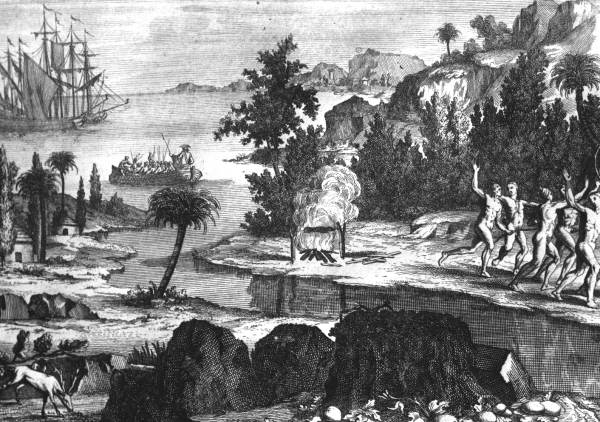

European Colonial Settlers
By the mid 1600’s, European nations began sending 1000s of people, including including families to settle North America and claim it for themselves. Some settlers also came from places throughout Europe to escape persecution and find religious and political freedom. The Southeastern US was “opened” for settlement with the Indian Removal Act of 1830. As the Native people were removed, more and more settlers arrived and set up colonies with farms and businesses in the longleaf pine forests. Some descendants of those early settler families are still living in the Southeast US.
African American People
At the same time as European settlers began colonizing North American, African people with rich cultures and experiences from their own nations were captured and brought to the longleaf pine region as the settlers moved in. They were enslaved by colonists to do the hard work of colony-building, agriculture, naval stores manufacture, and other industries. Africans in colonial America developed a vibrant culture that embodied a combination of resistance against their enslavers, adopted Christian worship, and customs from their native Africa. Many descendants of African people stayed in the Southeast US after slavery to live and work as free people.

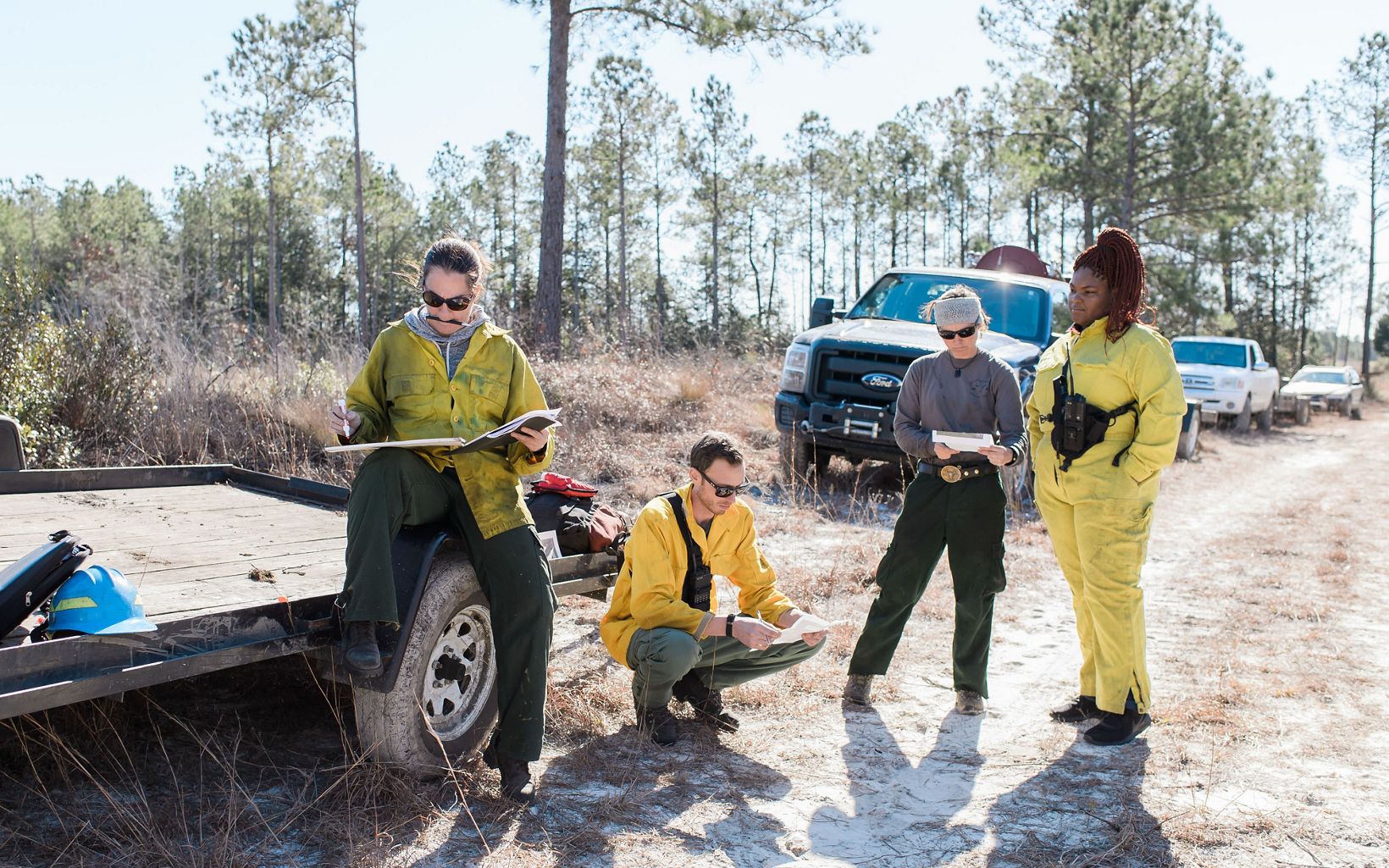
Modern Immigrants
Today many people from many lands call the Southeastern US home. Over time, people from all over the United States have moved to the South to work or go to school. Some people from other nations who have left their countries of origin to build a new and different life here in the US have also come to settle in the South. They are refugees who have fled war, poverty, or persecution. They are workers who travel to and through the Southeast to find jobs. They are students who have come here to be educated in US colleges and universities. There is no single group of people who call longleaf range home.
What happened to the longleaf forest?
How did we lose 97% of the longleaf pine forest? It took a few hundred years, but let's explore the history below.
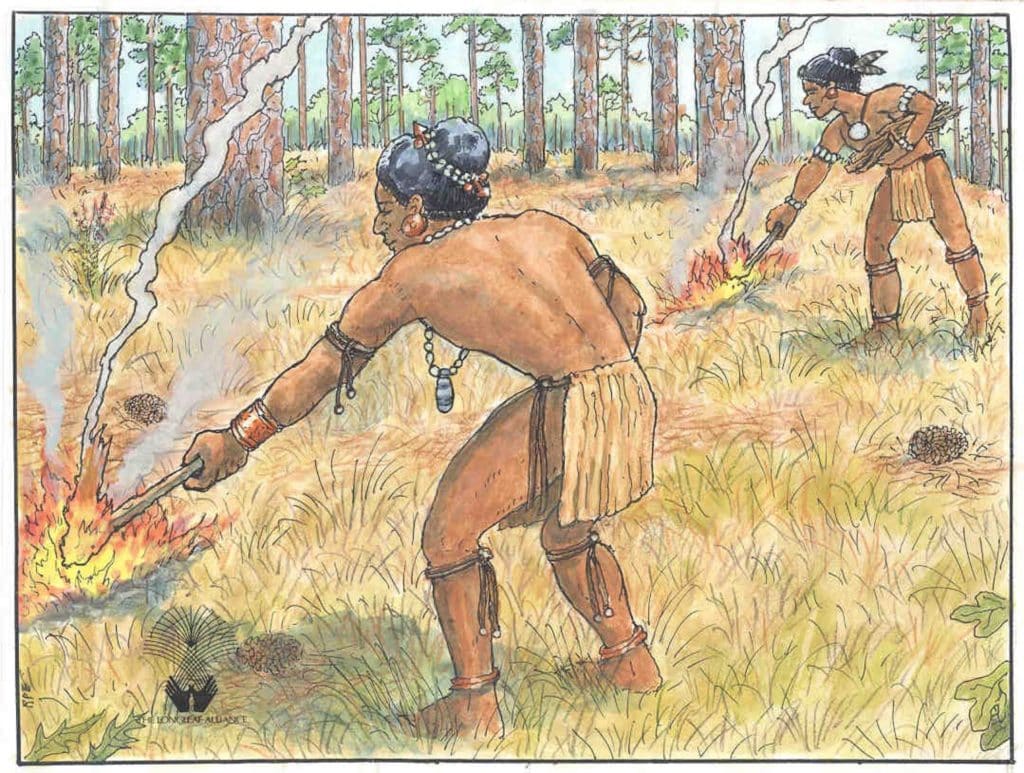
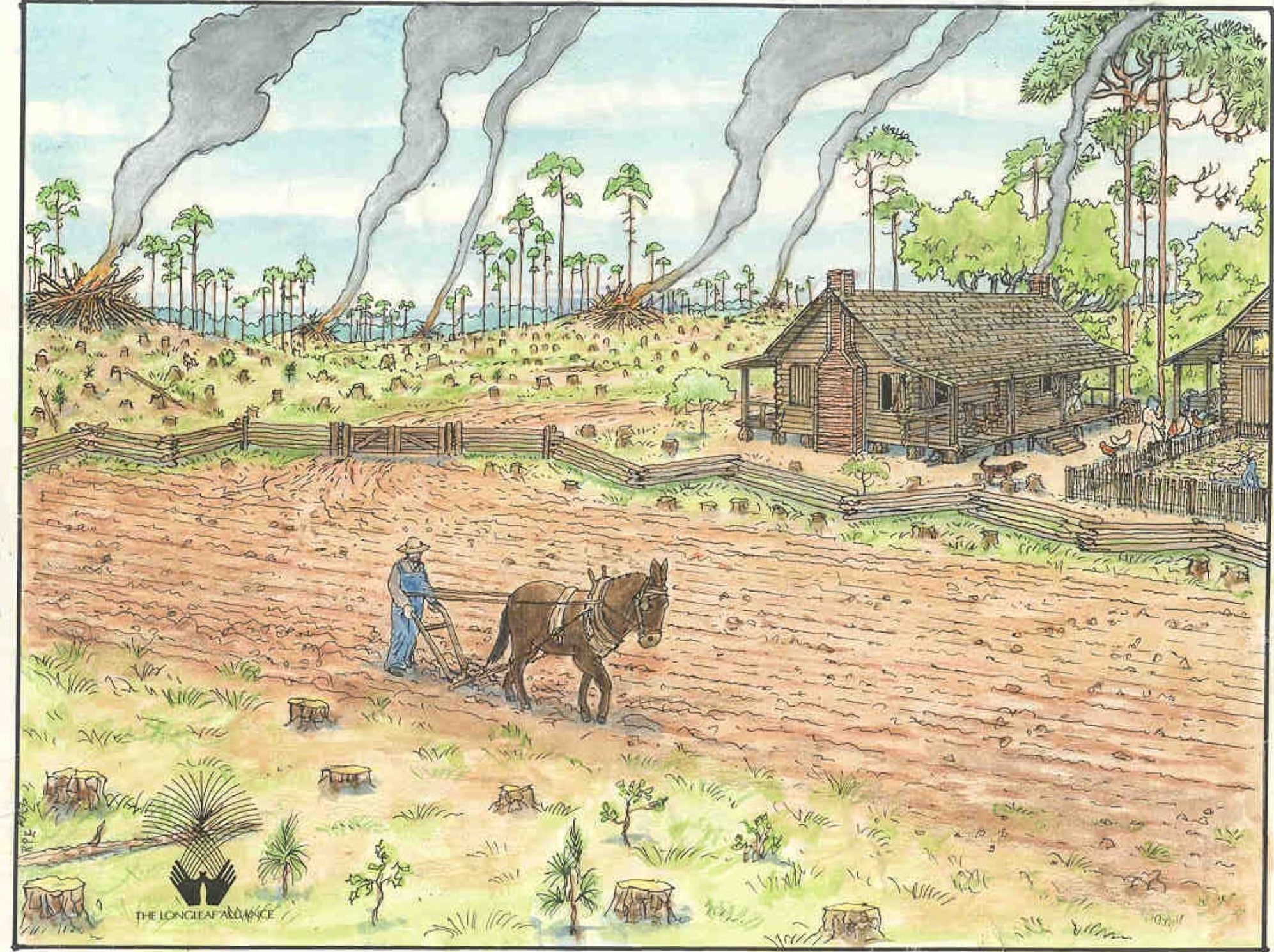
Woodland & Mississippian Periods
For thousands of years prior to European arrival in North America, many different Native American nations lived in and depended on the longleaf pine forests, including using fire to manage the habitat for important wildlife.
European Exploration
European settlers arrived in North America in the late-1500s/ early-1600s and brought cattle with them. Spanish colonists settled first in the south and southeast, and would often graze their longhorn cattle among the rich grassland under the longleaf pines.
Colonial Settlement
As European settlement expanded into the southeast, the longleaf forests became a valuable resource for food, building supplies, and firewood. Settlers cleared the land for agriculture, to build their houses, and to create roads.
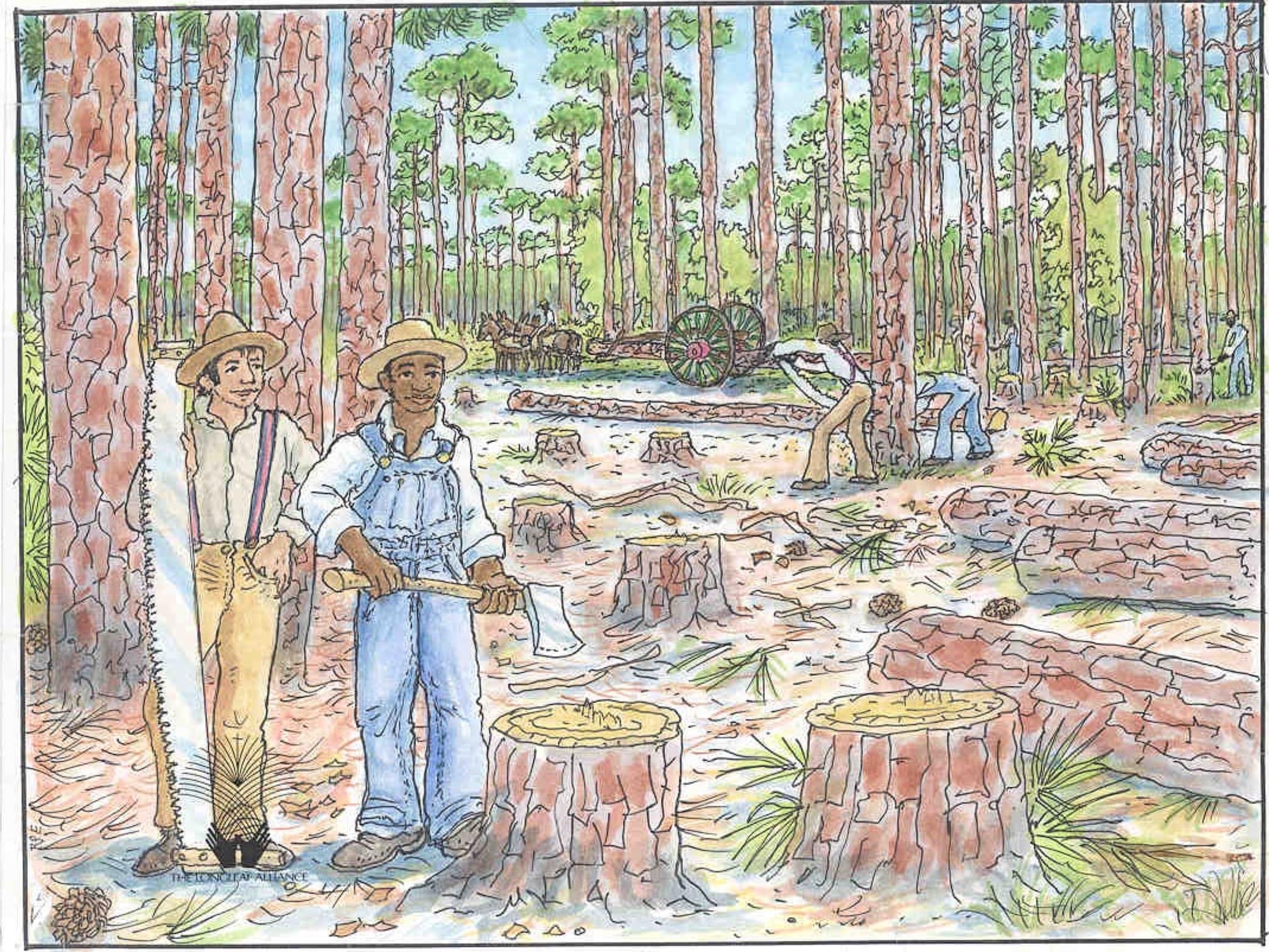
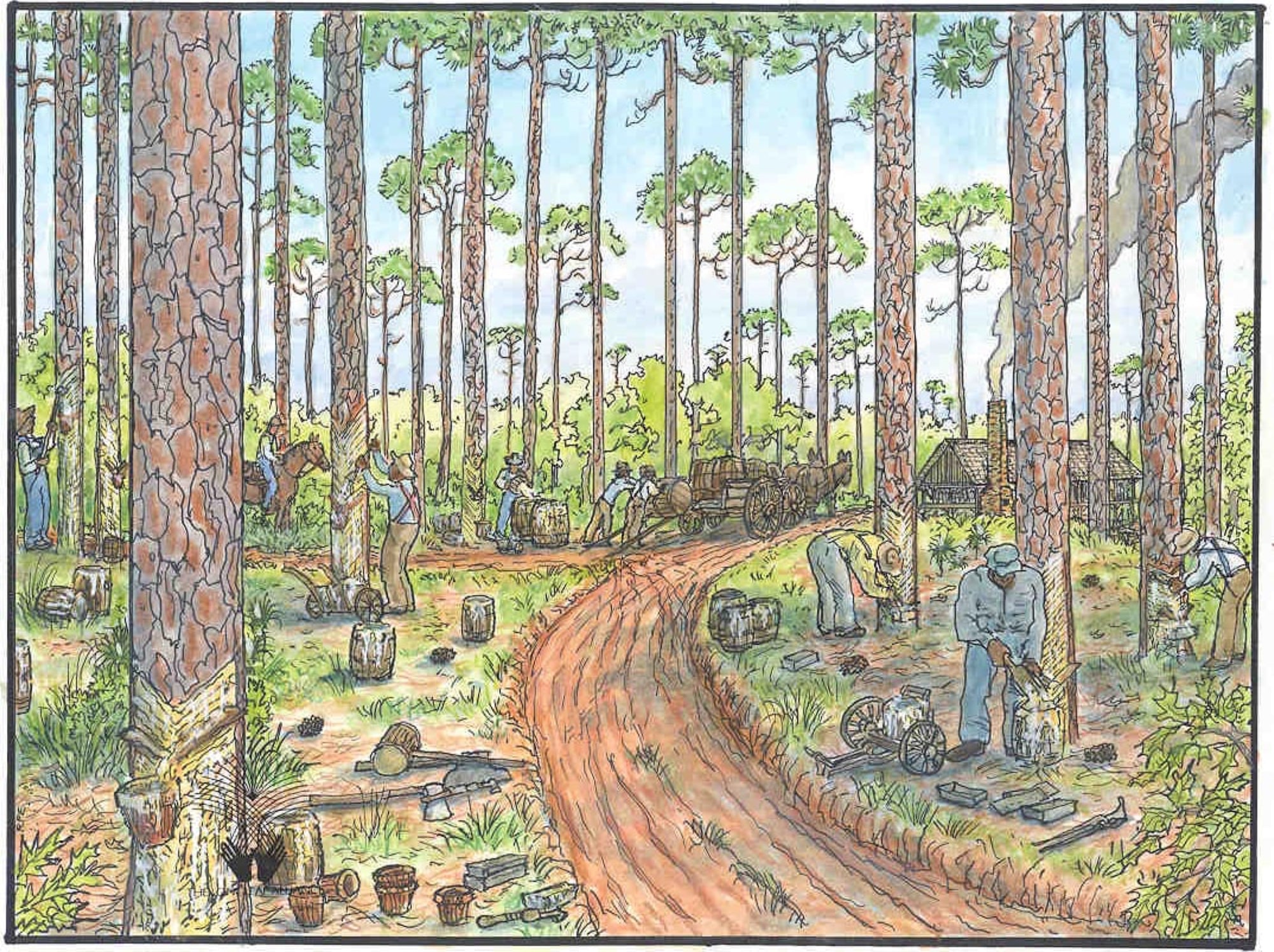
Naval Supplies
In the 1800s, using enslaved labor, resin or tree sap collected from longleaf trees in the southeast US was supplying nearly 70% of the world’s supply of naval stores - or non-edible materials that were used for waterproofing and paint thinning.
Indian Removal Act & Trail of Tears
As settlers used more land for farming, the U.S. government forcibly removed the native people who were living in this area with the Indian Removal Act of 1830. The Cherokee, Muscogee (Creek), Seminole, Chickasaw, and Choctaw nations among others were marched to areas west of the Mississippi. These forced marches are remembered as the “trail of tears.
Industrialization
As the United States became more industrious in the mid-1800s, the longleaf pine tree became a valuable tree because they grew long, strong, and straight. Logging of the longleaf pine forest cleared much of this valuable ecosystem.

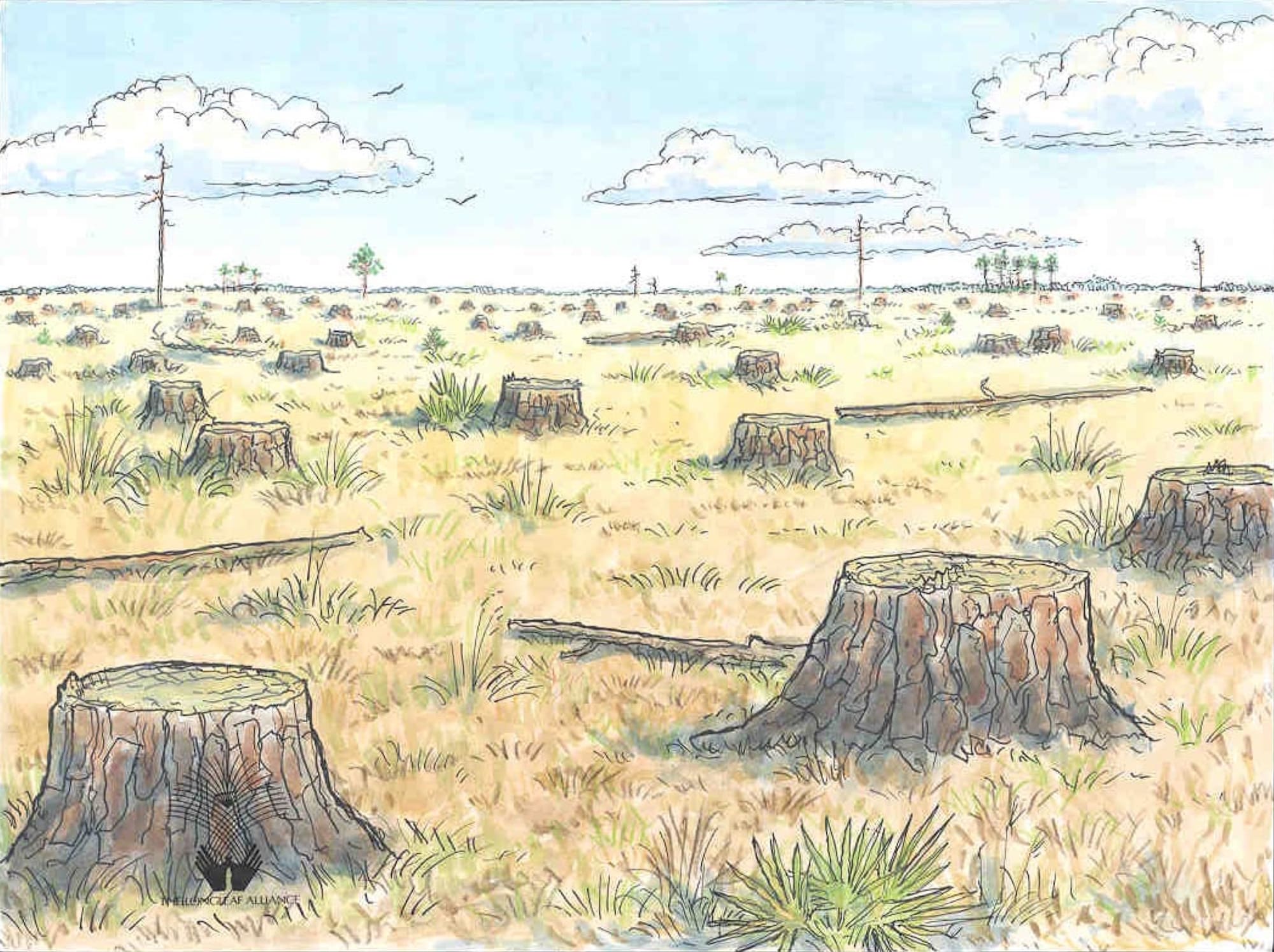
Industrial Revolution
With the invention of the steam engine and expansion of the railroad during the Industrial Revolution, most of the longleaf pine range became accessible by rail. This meant that trees could be cut down and shipped all across the country.
Degradation
By the early 1900s, much of the land across the southeast that was covered in longleaf forest just 100 years earlier was stumps. Most of the tall trees had been cut down and sold, and the animals that lived in these forests were disappearing too.
Introduced Species
One of the major issues that kept the longleaf pine forest from regrowing was wild pigs! These and other "invasive" species of plants and animals, were accidentally released in the region and either ate or outcompeted native species.

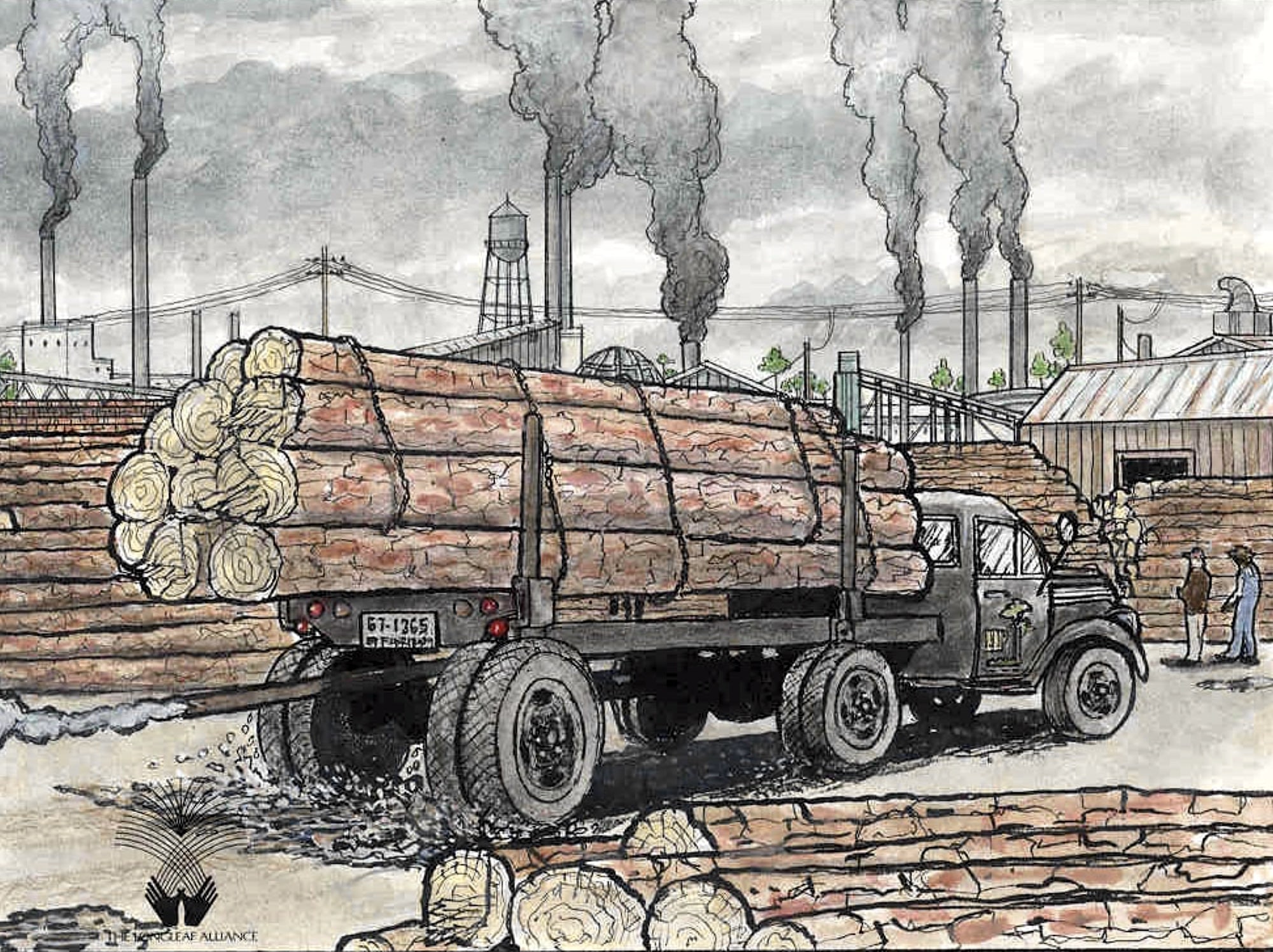
Fire Suppression
As more people filled the region, building homes and towns, the fires that happened naturally throughout the former longleaf pine forests became a threat. Private property owners wanted to protect their homes and farms. Landowners suppressed natural fires to protect their property and livelihood.
Great Depression & CCC
During the Great Depression in the 1940s, the Civilian Conservation Corp (CCC) was created to put people to work. The CCC planted faster-growing loblolly or slash pine in areas where the longleaf had once grown and worked to protect these trees from fire.
Trees as Commodities
The southeast US offers a great climate to grow trees and once the loblolly or slash pines were growing, they became a good and reliable source of wood to create pulp and paper. Timber and forest products became a major industry for the south.
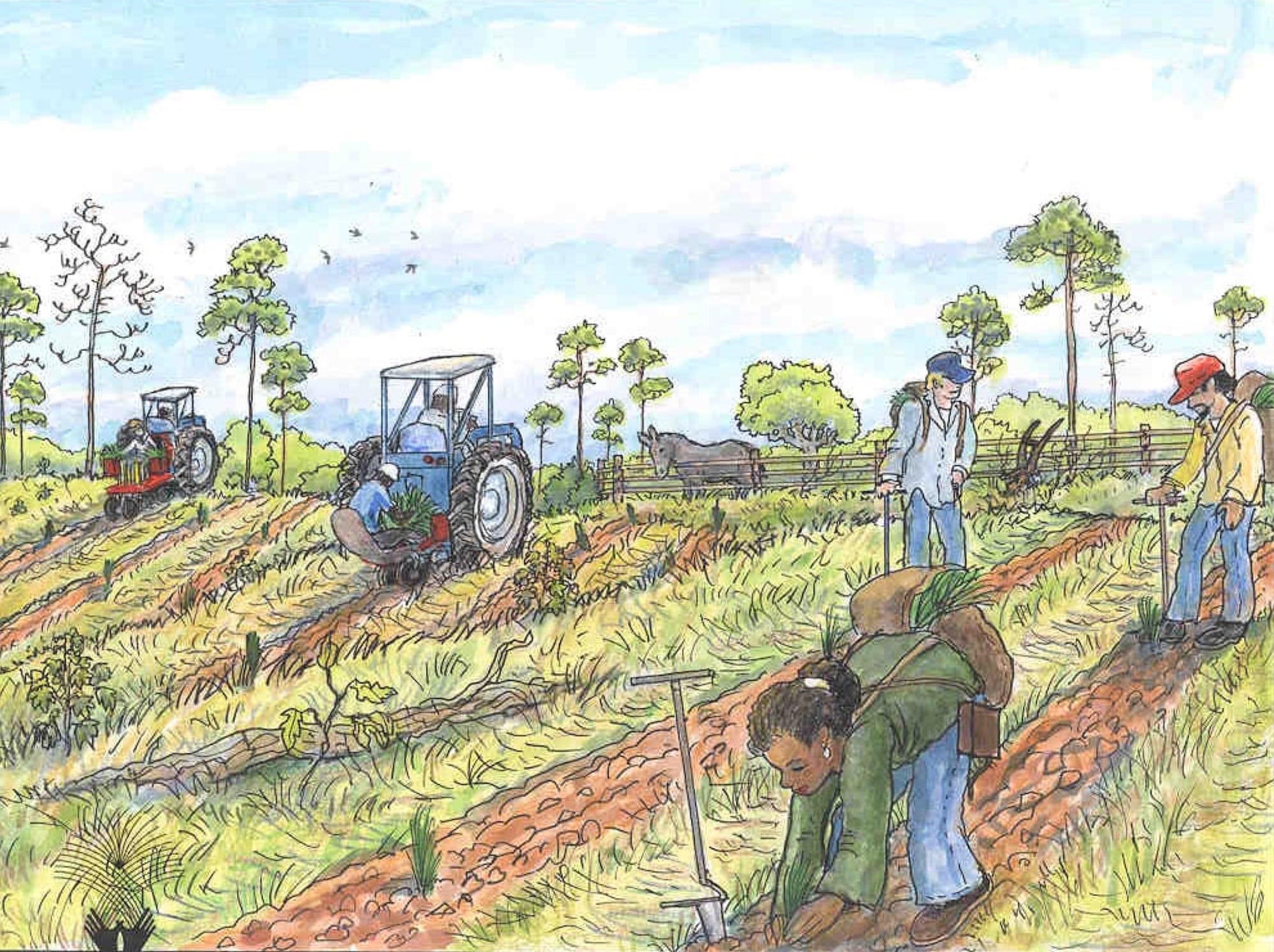
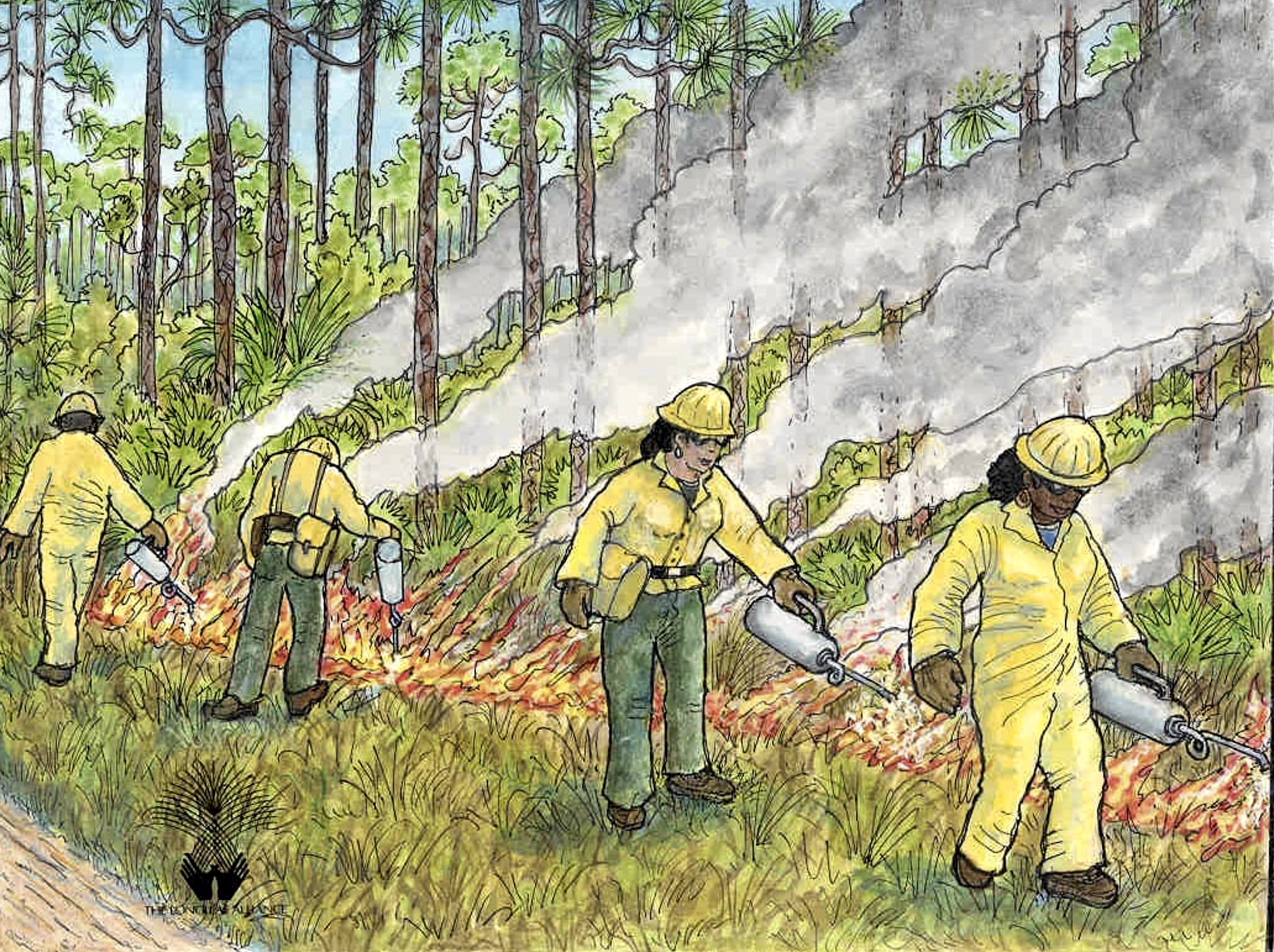
Conservation
With the longleaf pine forest nearly gone by the late 1900s, people began to realize how important this forest was for many species of plants and animals not found anywhere else on earth! Work began to restore and protect the longleaf pine ecosystem.
Restoration
A major factor in restoring and conserving longleaf pine forest is reintroducing fire in a safe and controlled way that doesn't put people in danger. Prescribed burns are one tool that forest managers and landowners are using to help this forest ecosystem.
